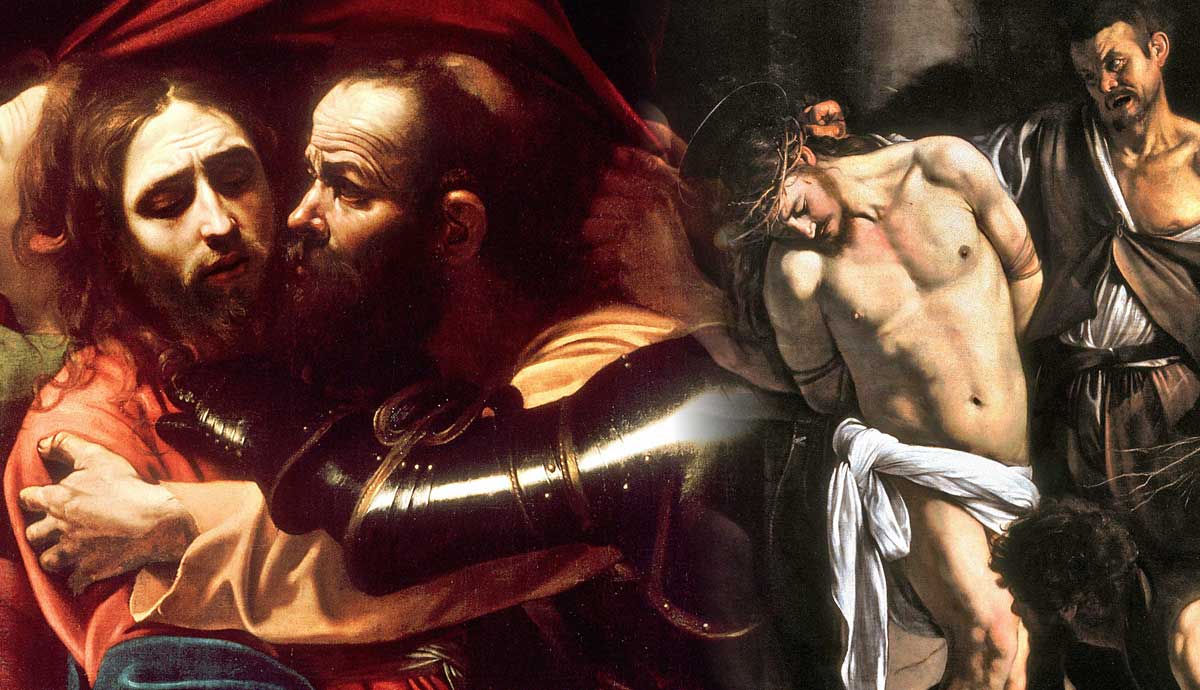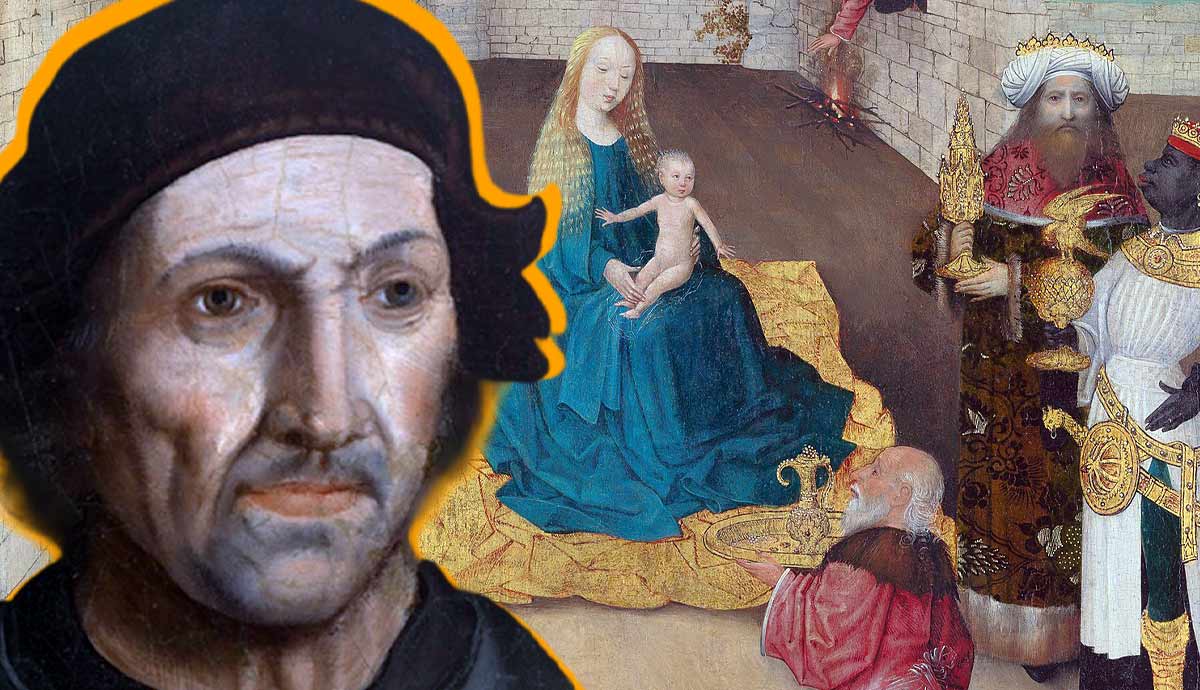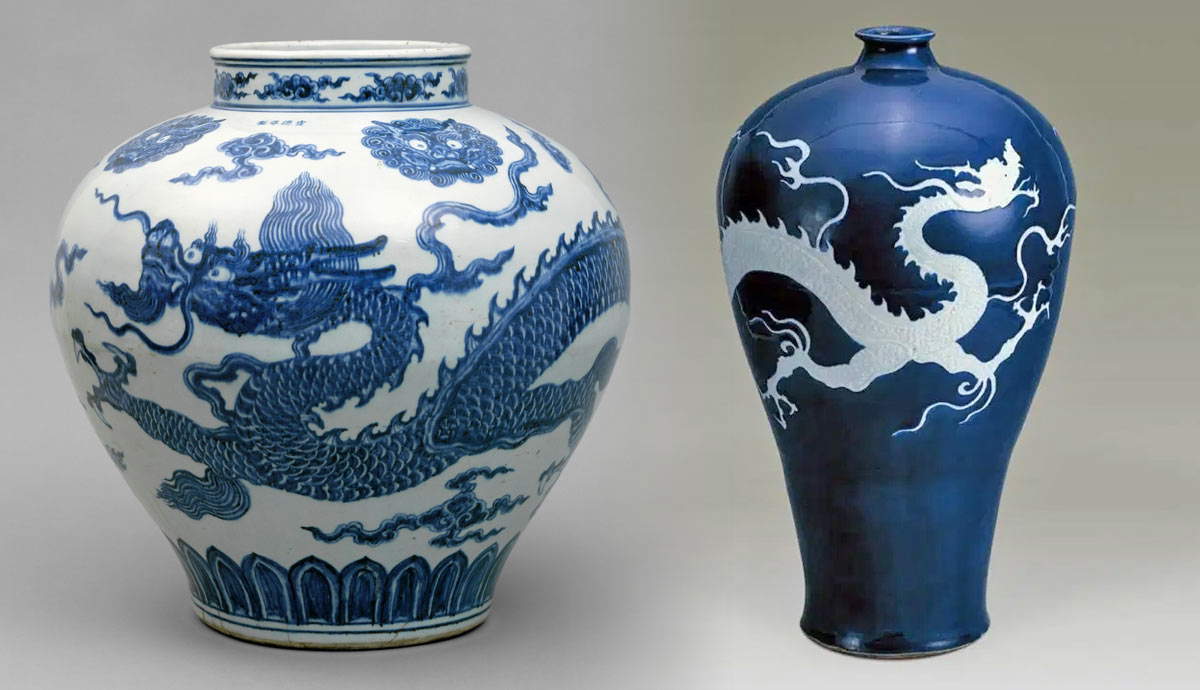
Caravaggio’s dramatic chiaroscuro technique revolutionized Baroque painting. His use of light and shadow as an expressive technique inspired countless artists and transformed the history of art. Instead of mathematical precision, the famous artist aimed for emotional impact. Let’s delve into the fascinating world of Caravaggio’s paintings and examine how he used light and shadow to intensify religious and mythological narratives.
The Innovation of Caravaggio’s Paintings

Caravaggio is one of the most celebrated painters in global art history; he inspired generations of imitators and original artists who reinterpreted his methods. However, due to the overwhelming presence of Caravaggio’s work and name in popular culture, he paradoxically became underrated as a revolutionary painter. Present-day viewers often unfairly dismiss the innovation and mastery in Caravaggio’s paintings, mostly because they are accustomed to taking them for granted. Caravaggio’s approach to light, shadow, and composition became the blueprint for art as we know it.

Caravaggio’s art developed on the soil of High Renaissance painting that celebrated the perfect harmony of all components and the beauty standards originating from Antiquity, and Mannerism, with its pastel tones and exaggerated expressive form and visual illusions. Both High Renaissance and Mannerist paintings featured complex, multi-figured compositions that were carefully calculated and pre-planned.
Caravaggio worked swiftly, often ignoring preliminary drawings altogether. Most importantly, he discarded the balanced harmony in favor of immediate, ecstatic impressions, dramatic effects, and the immediate trigger of empathetic feelings. He also limited the depiction of perspective, using light and shadow to construct deep space within his paintings.
Chiaroscuro & Tenebrism

The dramatic use of light and shadow is a signature trait of Caravaggio’s art. To explain this, we need to introduce two crucial terms: chiaroscuro and tenebrism. Chiaroscuro, literally translated from Italian as light-dark, relates to the expressive contrast of light and shadow, which Renaissance artists eagerly exploited to model space and realism in their works. The concept originated from drawing and woodblock printing, but soon expanded into the domain of painting, as artists began to specifically apply white or light-colored paint to show highlights and use darker tones to indicate shadows. Chiaroscuro was a technique that did not necessarily have to be overly dramatic and was simply used to convey three-dimensional forms through two-dimensional means.

Caravaggio was one of the artists who took the idea of chiaroscuro to the extreme. His radical and extensive use of contrasting shadows and highlights resulted in a specific style of painting known as tenebrism. Tenebrism, originating from the word tenebroso (gloomy, dark), was recognizable due to its almost theatrical use of light, with dark areas acting as a background. Tenebrism was an even more intense and dramatic version of chiaroscuro that is specifically associated with Caravaggio and Spanish and Italian painters who worked after him. The famous Soviet-Latvian art historian Boris Viper defined tenebrism as a “bottomless space” that pushed objects and figures forward to the visible foreground, but at the same time, isolated them from each other.
Caravaggio & Politics

Although it is unlikely that Caravaggio himself consciously used his art as a tool of political or religious propaganda, his work was employed in this way. At the time of Caravaggio’s activity, the Catholic Church faced an unexpected opponent in the form of newly emerged Protestantism. The Protestants accused the Catholics of abusing their religious power and distorting the word of God to serve their material needs.
In particular, they had an issue with the immense wealth accumulated in churches not only in the form of currencies and precious metals, but also in the form of artworks commissioned from artists. While Martin Luther, the leader of the Protestant Reformation, admitted the practicality of art in educating the masses, he nonetheless regarded the proliferation of image-related practices as a form of idolatry. In the Protestants’ worldview, people often worshiped images directly, rather than the figures they were intended to represent. The most radical proponents called for the destruction of all religious works of art, which resulted in lootings and violence in some regions of Northern Europe.

To combat the Protestants’ call for rationalism and clear thinking, the Vatican decided to put an emphasis on irrational emotional experiences. Instead of justifying the importance of art by intellectual means, the Catholic Church expected its artists to dive deeper into the divine power of artworks, evoking compassion and awe. The art of Caravaggio, with its intended emotion, gruesome scenes of violence, and expressive dynamism, perfectly fitted that purpose.
The viewers felt like they were not looking at a painting, but witnessing the scene unfolding, hearing the sounds, and feeling the textures. Catholic art of the post-Reformation era was designed to reconnect the believers to the emotions, fears, and sufferings of the figures they revered. As the majority of the European population was still illiterate, art in general and painting in particular were the primary ways of conveying the Church’s message.
Caravaggio’s Naturalism

Caravaggio’s paintings were not only emotionally intense but also clearly understandable. For instance, the complex and multi-layered stained-glass windows found in Gothic cathedrals were visually impressive as well, but often required a substantial amount of knowledge of theology and contemporary religious narratives to make sense of the images. Caravaggio’s Baroque paintings relied on simple yet intense emotions and feelings, including pain, betrayal, devotion, and more. Caravaggio’s use of dark flat backgrounds allowed him to manipulate highlights and shadows in the more important aspects of the painting, focusing the viewer’s attention on the emotion and suffering of his characters.
Caravaggio’s extreme naturalism had its occasional flaws. For instance, he was bitterly criticized for employing beggars and sex workers to pose as saints. He painted bodies realistically and didn’t shy away from working with dead bodies. For his famous painting The Raising of Lazarus, Caravaggio dug up the body of a man who had died four days before, just like Lazarus did on the day of his resurrection.
According to a legend, Caravaggio forced his models to hold the decaying body, allegedly threatening to beat them if they refused to. The dramatic light and shadow contrast arranged by Caravaggio made the scene even more realistic and dramatic. He highlighted Lazarus’ hands, with one of them extended towards Jesus, and the shocked faces of those witnessing the resurrection.
Caravaggio’s Still Lifes

Caravaggio’s intense signature use of chiaroscuro and tenebrism was not limited to his religious paintings. It also revealed itself in his approach to still life paintings and the details he incorporated into larger compositions. The existing hierarchy of painting genres in Western history did not consider still life works to be significant. If anything, they were incorporated into larger compositions or treated merely as exercises and pleasant elements of home decor. Caravaggio’s radical use of light and shadow has transformed this notion. His basket of fruit, painted rather early in his career, employed the same contrasts and carefully modeled shadows as his images of saints and models. He painted fruit compositions as if they were people, with the same approach to composition and spatial rendering.
Caravaggio’s “Judith Beheading Holofernes”

The subject of Judith, a Jewish widow, beheading Assyrian general Holofernes was a popular one in Baroque painting. However, Caravaggio’s rendering of the scene is one of the most famous in art history, not in the least due to its expressive use of light and shadow. Although Caravaggio highlighted Judith’s hands, he did not, unlike Artemisia Gentileschi, emphasize her physical strength. On the contrary, Caravaggio’s Judith is a rather gentle being who does not apply brutal force to commit the act. Her face expressed disgust and determination, while Holofernes’ face, with his head halfway separated from his body, was frozen in a mask of fear and pain.
Caravaggio’s Painting “Calling of Saint Matthew”

One of Caravaggio’s most famous works, The Calling of Saint Matthew, is a perfect example of his approach to modeling light and shadow. According to the biblical story, Jesus called a tax collector named Matthew to join him as a disciple, and he agreed. Unlike the relatively short and straightforward original story, Caravaggio’s retelling added an element of natural doubt to the scene, with Matthew pointing at himself, unsure of what to do next. Matthew’s face and hand gesture were deliberately emphasized with highlights, and the faces of the two young men (one leaning toward Jesus and the other backing away) are similarly well-lit, to illustrate doubt.










